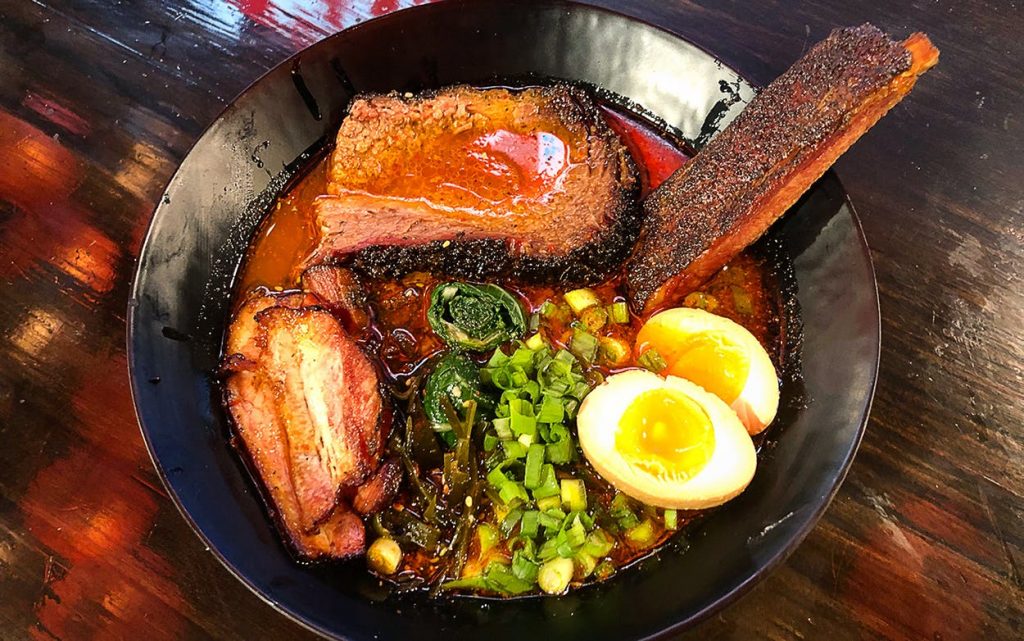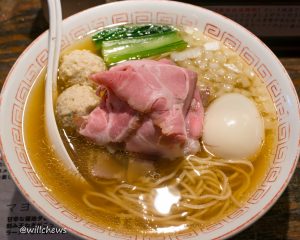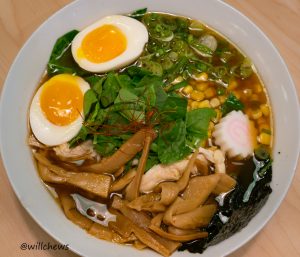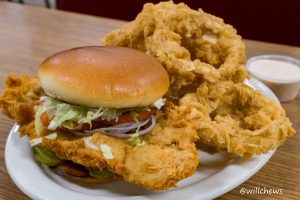- A trio of proteins also flavors the broth, which they call “triple stock.” Dried anchovies, pork femurs, and chicken feet, along with a lot of vegetables, seaweed, and mushrooms, simmer together for 24 hours.
- I tried the tonkotsu broth on my first visit. It’s got an extra richness from paitan, a concentrated tonkotsu stock base that’s added to the triple stock. Mercer uses the Japanese Somi brand of paitan because, he said, “I tried to make it, and every one was not as good as the Asian one.” I asked if it felt like trying to make ketchup better than Heinz. He paused and said, “It’s exactly like that.”
But even this tonkotsu broth cheatcode doesn’t make sense if you consider that Koko is already trying to make its own tonkotsu broth by putting pork femur bones in its stock pot. It may be that Mercer is unable to get the level of flavor or creaminess he desires and is willing to settle on Somi as a shortcut. But he may benefit from trying to improve upon his tonkotsu recipe, perhaps complementing the femur bones with more collagen-heavy parts of the pig, like the feet, trotters, neck bones, and the skull to generate the rich broth he’s looking for.
Yeah, making ramen broth is a lot of work.
- The shoyu broth, flavored with soy sauce, is lighter. I tried them both, but I can’t comment on the flavor of the shoyu since I made the mistake of ordering spice level nine, which is their most punishing…I can attest that it’s rough to power through the bowl of level nine ramen because the spiciness is dispersed throughout the fatty broth, which is served at an elevated temperature that heightens the burn. Slurping the noodles also aerates and intensifies the spices, and that doesn’t even account for what happens when a stray drop gets in your nose while you’re slurping. Next time I’ll stick with level three or four.

The image of this shoyu bowl and the description of the extensive appetizer menu in this review suggest that this shop should find non-ramen ways to showcase its BBQ. Putting BBQ in a bao sounds intriguing, but that does not create an obligation to serve ramen, no matter how badly a chef wants to emulate David Chang and Momofuku. Why ruin perfectly good BBQ by dunking it in shoyu broth, as seen in the picture to the left?


